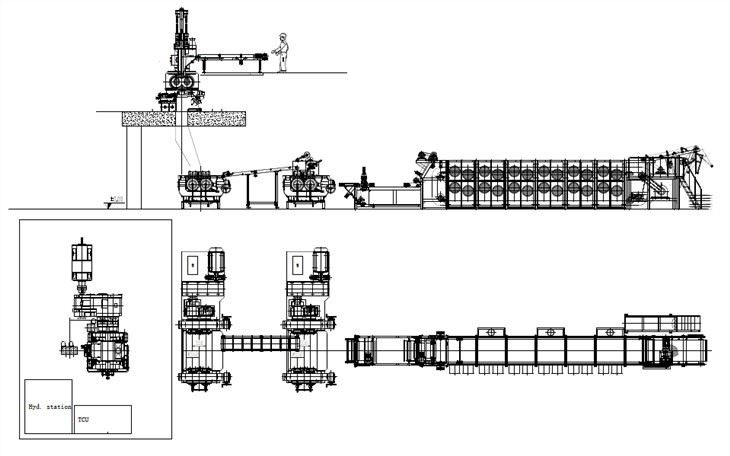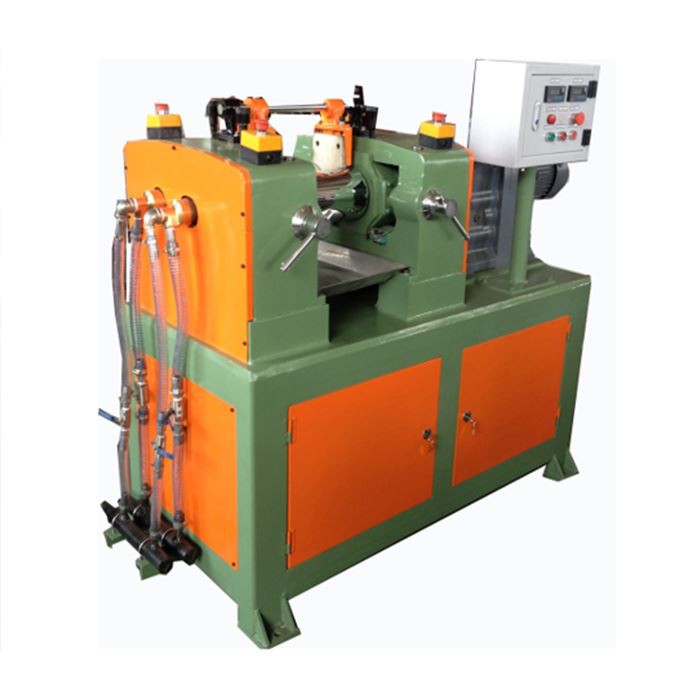Hey there! As a supplier of rubber mixing machines, I often get asked about how often these machines should be maintained. It's a crucial question because proper maintenance not only ensures the machine's longevity but also guarantees the quality of the rubber products you're making. So, let's dive right into it.
Why Maintenance Matters
First off, let's talk about why maintenance is so important. Rubber mixing machines are complex pieces of equipment that go through a lot of wear and tear during operation. The constant mixing, shearing, and heating processes can take a toll on various components. If you don't maintain your machine regularly, you might end up facing some serious issues.
For instance, worn-out bearings can cause excessive vibration, which not only affects the mixing quality but also puts additional stress on other parts of the machine. Over time, this can lead to more significant breakdowns and costly repairs. Moreover, a poorly maintained machine may not mix the rubber evenly, resulting in inconsistent product quality. This can be a major problem for your business, as it can lead to customer dissatisfaction and lost sales.
Factors Affecting Maintenance Frequency
Now, let's get to the heart of the matter: how often should you maintain your rubber mixing machine? Well, the answer isn't straightforward, as it depends on several factors.
Usage Intensity
One of the most important factors is how often you use the machine. If you're running your rubber mixing machine 24/7 in a high-volume production environment, you'll need to perform maintenance more frequently than if you're using it only occasionally. For example, a factory that produces large quantities of rubber products every day might need to conduct daily inspections and weekly preventive maintenance. On the other hand, a small workshop that uses the machine a few hours a week can get away with less frequent maintenance.
Type of Rubber and Additives
The type of rubber and additives you're using also plays a role. Some rubbers are more abrasive than others, and certain additives can be corrosive. If you're working with these materials, they can cause more rapid wear and tear on the machine's components. In such cases, you'll need to increase the maintenance frequency to prevent damage. For instance, if you're using a highly abrasive rubber compound, you might need to check the mixing blades and other contact surfaces more often for signs of wear.
Environmental Conditions
The environment in which the machine operates can also affect its maintenance needs. If the machine is located in a dirty or humid environment, it's more likely to accumulate dust, dirt, and moisture, which can cause corrosion and other problems. In this case, you'll need to clean and protect the machine more frequently. Additionally, extreme temperatures can also impact the performance of the machine, so you may need to adjust the maintenance schedule accordingly.
General Maintenance Guidelines
Based on my experience as a rubber mixing machine supplier, here are some general maintenance guidelines that you can follow:
Daily Maintenance
- Visual Inspection: Start your day by visually inspecting the machine for any obvious signs of damage, such as loose bolts, leaks, or worn-out parts. Check the belts, chains, and couplings for proper tension and alignment.
- Cleaning: Keep the machine clean by removing any rubber residues, dust, and debris. Use a soft brush or compressed air to clean hard-to-reach areas.
- Lubrication: Check the lubrication levels of all moving parts and top up if necessary. Make sure to use the recommended lubricants for each component.
Weekly Maintenance
- Function Check: Perform a function check of all the machine's controls and safety features. Test the emergency stop button, temperature sensors, and pressure gauges to ensure they're working properly.
- Belt and Chain Tension: Check the tension of the belts and chains and adjust if needed. Loose belts or chains can cause slippage and reduce the machine's efficiency.
- Filter Replacement: Replace the air filters and oil filters according to the manufacturer's recommendations. Clogged filters can restrict airflow and reduce the machine's performance.
Monthly Maintenance
- Component Inspection: Inspect the critical components of the machine, such as the mixing blades, rotors, and bearings, for signs of wear and tear. Replace any worn-out parts immediately to prevent further damage.
- Electrical System Check: Check the electrical connections and wiring for any signs of damage or loose connections. Make sure all the electrical components are functioning properly.
- Hydraulic System Check: If your machine has a hydraulic system, check the hydraulic fluid level and quality. Look for any signs of leaks or contamination and replace the fluid if necessary.
Quarterly and Annual Maintenance
- Major Component Overhaul: Every few months or once a year, depending on the usage, you should perform a major overhaul of the machine. This may involve disassembling the machine, cleaning all the components, and replacing any worn-out parts.
- Calibration: Calibrate the machine's sensors, gauges, and controls to ensure accurate and consistent performance. This is especially important for machines that require precise temperature, pressure, or speed control.
- Training and Documentation: Provide training to your operators on proper machine maintenance and operation. Keep detailed records of all maintenance activities, including dates, tasks performed, and parts replaced. This will help you track the machine's performance and identify any potential issues early on.
Specialized Machines and Their Maintenance
It's worth noting that different types of rubber mixing machines may have specific maintenance requirements. For example, a Rubber Mixing Line is a complex system that consists of multiple components working together. It requires a more comprehensive maintenance plan to ensure all the parts are functioning properly. You'll need to pay special attention to the conveyors, mixers, and control systems.

A Lab Open Mill, on the other hand, is often used for small-scale research and development. While it may not be used as intensively as a production machine, it still needs regular maintenance to ensure accurate results. You'll need to clean the mill rolls regularly and check the temperature control system.
And if you have a Rubber Batch Off Unit, you'll need to focus on the cooling system, conveyor belts, and cutting mechanisms. These components are critical for the proper functioning of the unit and need to be maintained regularly.

Conclusion
In conclusion, the frequency of rubber mixing machine maintenance depends on several factors, including usage intensity, type of rubber and additives, and environmental conditions. By following the general maintenance guidelines and tailoring them to your specific machine and operating conditions, you can keep your machine running smoothly and efficiently.
If you're in the market for a new rubber mixing machine or need more information on maintenance, feel free to reach out. I'm here to help you make the best decision for your business and ensure that your machine is well-maintained for years to come.

References
- Manufacturer's manuals for rubber mixing machines
- Industry best practices for rubber processing equipment maintenance




